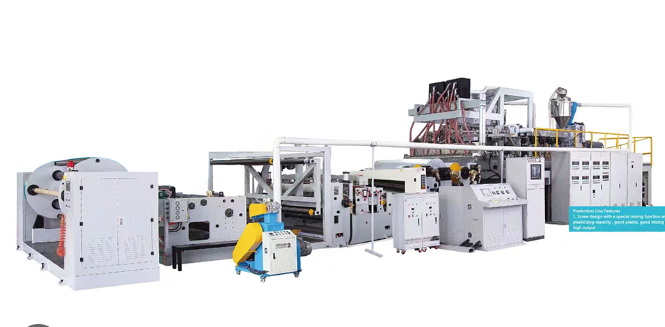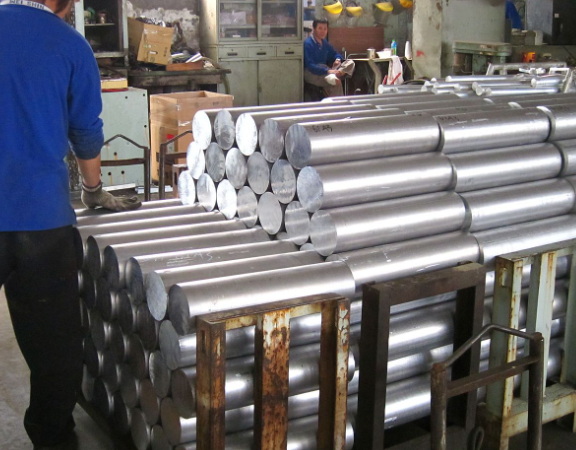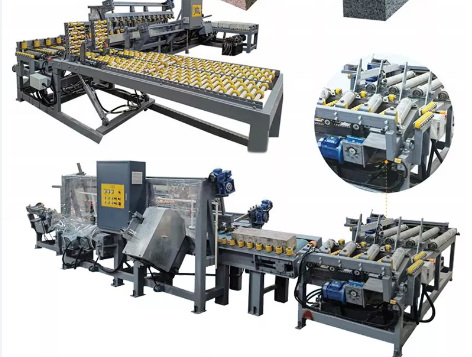Content Menu
● Introduction to HDPE Blow Molding
>> Extrusion Process
>> Molding Process
>> Cooling Process
● Working Principle of HDPE Full Automatic Double Station Extrusion Blow Molding Machine
>> Key Components
>> Advantages
● Applications of HDPE Full Automatic Double Station Extrusion Blow Molding Machine
● Technical Specifications
● Future Trends in Blow Molding Technology
● Market Dynamics
● Maintenance and Troubleshooting
● Conclusion
● FAQ
>> 1. What is the primary advantage of using a double station extrusion blow molding machine?
>> 2. How does the machine ensure consistent product quality?
>> 3. What types of products can be produced using this machine?
>> 4. What are the common maintenance tasks for this machine?
>> 5. How does the machine contribute to sustainability?
● Citations:
HDPE (High-Density Polyethylene) blow molding machines are crucial in the production of various plastic products, including bottles, containers, and jerry cans. Among these machines, the HDPE full automatic double station extrusion blow molding machine stands out for its efficiency and versatility. This article will delve into the working principle, advantages, and applications of this machine, providing a comprehensive understanding of its role in modern plastic manufacturing.

Introduction to HDPE Blow Molding
HDPE blow molding is a process that involves heating HDPE resin to its molten state and then shaping it into a hollow object using compressed air. The process typically involves three main steps: extrusion, molding, and cooling.
Extrusion Process
In the extrusion step, HDPE resin is fed into an extruder where it is melted and formed into a parison—a hollow tube of molten plastic. The extruder applies heat and pressure to ensure the HDPE reaches the desired consistency for molding. The screw diameter and L/D ratio of the extruder are critical in determining the quality and output of the parison. For instance, a larger screw diameter can increase production capacity, while a higher L/D ratio can improve the mixing efficiency of the plastic material.
Molding Process
Once the parison is formed, it is transferred to a mold cavity where it is inflated using compressed air. The mold gives shape to the molten plastic, determining the final design of the product. The molding process requires precise control over temperature and pressure to ensure uniform wall thickness and structural integrity of the product.
Cooling Process
After the mold is filled and the plastic has taken shape, it is cooled to solidify the material and maintain its structural integrity. Cooling can be achieved through various methods, such as air cooling or water cooling. Efficient cooling systems are essential to reduce cycle times and increase production efficiency.
Working Principle of HDPE Full Automatic Double Station Extrusion Blow Molding Machine
The HDPE full automatic double station extrusion blow molding machine is designed for high-volume production of plastic products. It operates by continuously extruding a parison, which is then molded into the desired shape using compressed air. The machine features two stations, allowing for simultaneous production of two products, significantly increasing efficiency.
Key Components
1. Extruder: This is where the HDPE resin is melted and formed into a parison. The extruder's performance is crucial for maintaining consistent product quality and output.
2. Die Head: The parison is extruded through the die head, which shapes it into the desired form. The die head's design affects the uniformity of the parison's wall thickness.
3. Mold Cavity: The parison is placed in the mold cavity where it is inflated with compressed air to take the shape of the final product. The mold design determines the product's shape and size.
4. Cooling System: After molding, the product is cooled to solidify the plastic. Efficient cooling systems can significantly reduce production cycle times.
5. Clamping System: Ensures the mold is securely closed during the molding process, maintaining pressure and preventing defects.
Advantages
- High Efficiency: The double station design allows for the simultaneous production of two products, doubling output compared to single-station machines.
- Versatility: Can produce a wide range of products, from small bottles to large containers.
- Cost-Effective: Reduces production costs by minimizing material waste and increasing production speed.
Applications of HDPE Full Automatic Double Station Extrusion Blow Molding Machine
These machines are widely used in various industries:
1. Packaging Industry: For producing plastic bottles, jerry cans, and containers. The demand for lightweight and durable packaging solutions drives the use of HDPE blow molding machines in this sector.
2. Automotive Industry: For manufacturing automotive parts such as fuel tanks and air ducts. The lightweight nature of HDPE products contributes to improved fuel efficiency in vehicles.
3. Consumer Goods: Produces household items like plastic chairs and tables. The versatility of HDPE blow molding machines allows for the creation of complex shapes and designs.
Technical Specifications
- Screw Diameter: Typically ranges from 55 mm to 90 mm, depending on the machine model and production requirements.
- Screw L/D Ratio: Usually between 25:1 and 26:1, which influences the mixing efficiency and output quality.
- Output Capacity: Can produce up to 160 kg/h of HDPE products, depending on the machine's specifications.
- Power Consumption: Main motor power ranges from 7.5 kW to 45 kW, reflecting the machine's energy efficiency and operational costs.

Future Trends in Blow Molding Technology
As the industry evolves, several trends are expected to shape the future of blow molding machines:
1. Sustainability and Eco-Friendly Solutions: The integration of biodegradable and recyclable materials will become more prevalent, driven by environmental regulations and consumer demand for sustainable products[2].
2. Advanced Automation and AI Integration: The use of AI and machine learning will enhance machine efficiency, allowing for real-time adjustments and optimization, leading to higher productivity and consistent quality[2].
3. Customization and Flexibility: Machines will need to be more flexible to accommodate customized packaging solutions, enabling quick mold changes and versatile production[2].
4. Integration with 3D Printing: This will allow for the creation of complex designs and rapid prototyping, reducing lead times for new products[2].
5. Enhanced Durability and Maintenance: Innovations in materials and engineering will lead to more robust machines requiring less frequent maintenance, reducing operational costs[2].
Market Dynamics
The HDPE blow molding machines market is driven by factors such as rapid urbanization and technological advancements. However, it faces challenges like high initial capital investments and stringent regulations[8]. Despite these challenges, the market offers significant growth opportunities driven by government support and the adoption of AI-based technologies.
Maintenance and Troubleshooting
Regular maintenance is crucial to ensure the machine operates smoothly. Common issues include uneven heating, which can lead to inconsistent product quality. Troubleshooting involves checking heaters, blow mold cavities, and ensuring proper alignment of molds. Additionally, maintaining the extruder and die head is essential for consistent parison quality.
Conclusion
The HDPE full automatic double station extrusion blow molding machine is a vital tool in modern plastic manufacturing, offering high efficiency, versatility, and cost-effectiveness. Its ability to produce a wide range of products makes it an essential asset for industries such as packaging and automotive. By understanding its working principle and applications, manufacturers can optimize their production processes and meet the growing demand for high-quality plastic products.

FAQ
1. What is the primary advantage of using a double station extrusion blow molding machine?
The primary advantage is the ability to produce two products simultaneously, significantly increasing production efficiency and output.
2. How does the machine ensure consistent product quality?
Consistent product quality is ensured through precise temperature control, uniform parison formation, and proper mold alignment.
3. What types of products can be produced using this machine?
This machine can produce a variety of products, including plastic bottles, jerry cans, containers, and automotive parts.
4. What are the common maintenance tasks for this machine?
Common maintenance tasks include checking heaters, ensuring proper mold alignment, and cleaning the die head and mold cavities.
5. How does the machine contribute to sustainability?
The machine contributes to sustainability by minimizing material waste and reducing energy consumption through efficient production processes.
Citations:
[1] https://www.jwellextrusions.com/products/double-station-blow-molding-machine/
[2] https://www.faygounion.com/news/the-future-of-blow-molding-machines-what-to-expect-in-2025/
[3] https://autoplasticsworld.com/blow-molding-machines-blow-molding-process/
[4] https://m.automaticblowmouldingmachine.com/sale-26564118-high-speed-extrusion-blow-molding-machine-hdpe-bottles-double-station.html
[5] https://markwideresearch.com/hdpe-large-blow-molded-products-market/
[6] https://www.technepackaging.com/en/products/by-size/medium/e-750/
[7] https://blowing-machine.en.made-in-china.com/product/RajUpYQvRzkJ/China-Double-Station-HDPE-Plastic-Extrusion-Blow-Moulding-Machine.html
[8] https://www.cognitivemarketresearch.com/hdpe-blow-molding-machines-market-report
[9] https://www.cm-pet.com/msg/case-study.html
[10] https://wmpowerjet.en.made-in-china.com/product/QZIAmxtdmDTa/China-Advanced-Fully-Automatic-HDPE-Bottle-Extrusion-Blow-Moulding-Machine.html
[11] https://www.marketresearch.com/APO-Research-Inc-v4273/HDPE-Large-Blow-Molded-Products-40151089/
[12] https://www.prm-taiwan.com/blog/5-minutes-to-know-hdpe-blow-molding_56
[13] https://www.indiamart.com/proddetail/200ml-double-station-hdpe-blow-molding-machine-11932507273.html
[14] https://www.cognitivemarketresearch.com/hdpe-medium-blow-molding-market-report
[15] https://www.prm-taiwan.com/blog/top-6-blow-molding-examples-by-extrusion-machines_402
[16] https://www.alibaba.com/product-detail/5L-HDPE-Bottle-Blowing-Machine-with_1600861504784.html
[17] https://www.globenewswire.com/news-release/2024/11/19/2983639/28124/en/Blow-Molding-Machines-Industry-Overview-2024-2030-Regional-Insights-Raw-Material-Usage-Process-Type-Developments-End-Use-Sector-Analysis-Competitive-Landscape.html
[18] https://www.universalplastics.com/blow-molding-case-studies/
[19] https://www.alibaba.com/product-detail/High-Quality-Automatic-HDPE-Plastic-Bottle_1601223468298.html
[20] https://www.promarketreports.com/reports/pet-stretch-blow-molding-machine-31849






















